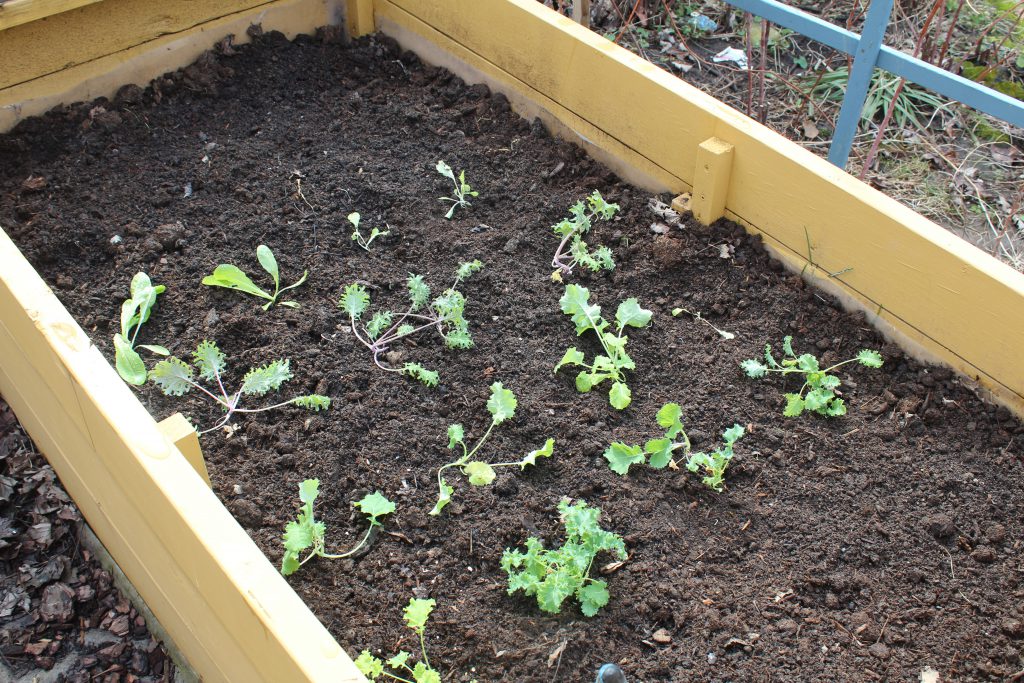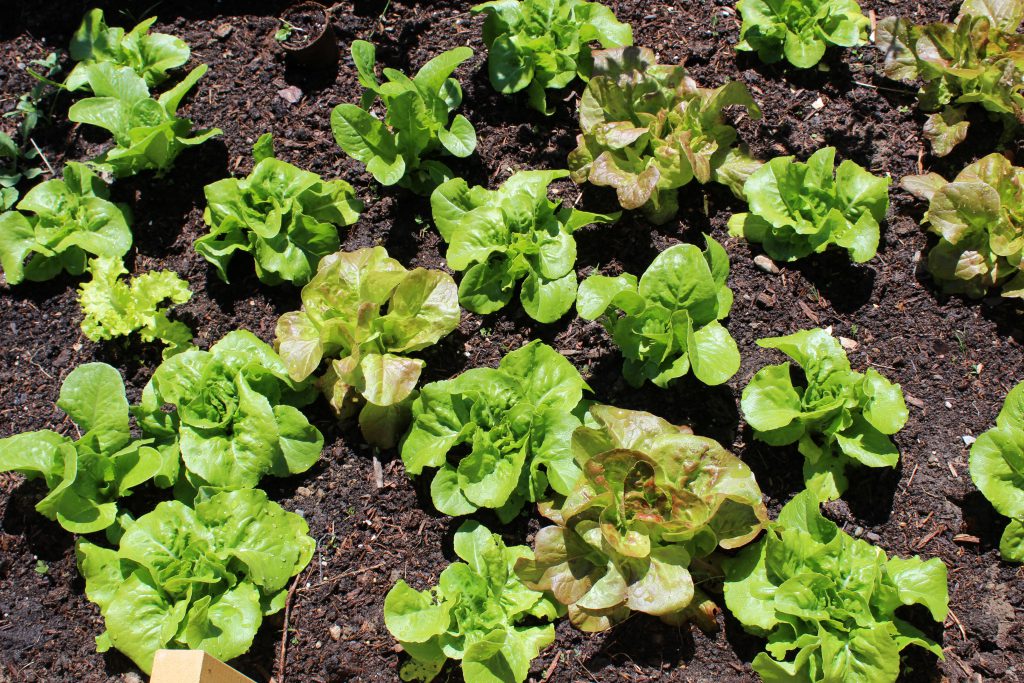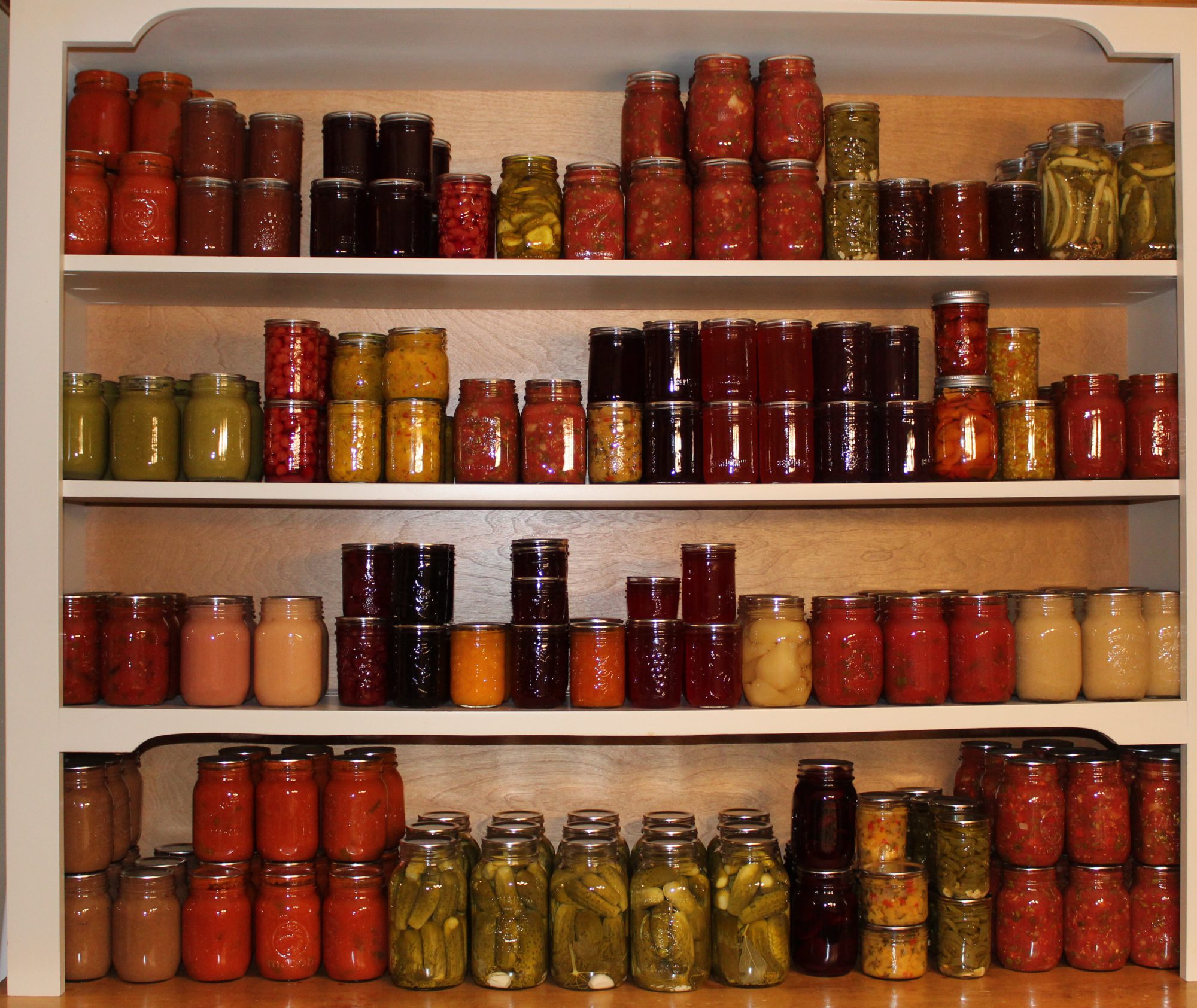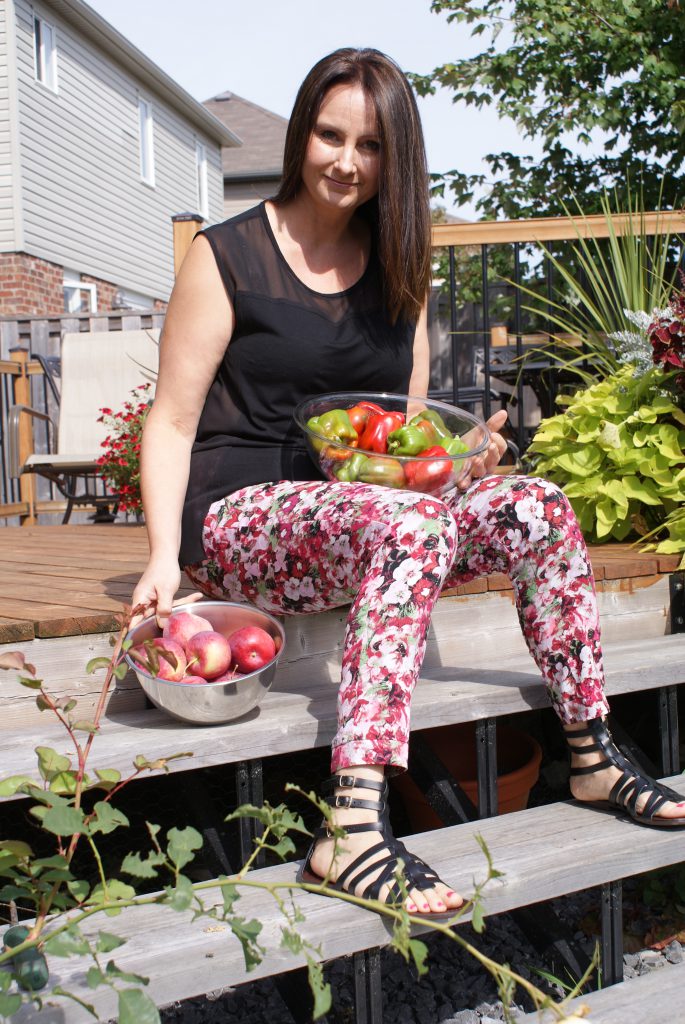
Yesterday, I posted a video about how to start lettuce and kale plants from seeds. Once you have planted the lettuce and kale seeds, place them in a warm place in your house and water the soil when it is dry. The seedlings should sprout in just a couple of days. If you have a south facing window, put your seedlings near that window during the day so that the plants can get some filtered sun.
Before the plants can be put in the garden, they must be hardened off. This is simply the process of acclimatizing the seedlings to the outdoor conditions. Having been inside, they will sunburn easily and they are not strong enough to withstand the wind. So, start by putting the plants outside for an hour out of direct sunlight and sheltered from the wind. Then gradually expose them to more sunlight and wind. For example, you could put them out in the morning sunlight, which is less intense for an hour one day, followed by 2 hours the next day. Once they tolerate morning sun, allow an hour of midday sun and increase that over the coming days. If the seedlings are getting too much intense sunlight, you’ll see a bleaching of the leaves, which can turn brown if they get burnt. Similarly, you will want to acclimatize the seedlings gradually to the cooler evening temperatures. They should be ready to transplant after a week.
Then, once the weather is around zero degrees at night, I plant lettuce and kale seedlings in my cold frame which has a Plexiglas lid that I can close at night to trap the heat. When the weather is 10 degrees or more during the day, I prop the lid open to allow some air flow.
If you do not have a cold frame and want to plant them in a container or in your garden, then first, make sure your seedling has 3-4 true leaves and for best success plant after the last frost in the spring.
Additional plants to consider starting from seeds indoors in March are:
- Arugula, broccoli, cauliflower, cabbage, onion, peppers, tomatoes, eggplant and sweet potato.
- Parsley can be started as well.
Because tomatoes and peppers need a long growing season, I start them indoors about 6 weeks before I plant them in the garden. So, I’ll use a larger container – 4-inch pot, for example. But the planting method is basically the same as kale or lettuce. To increase my odds of success, I plant two seeds in each pot and simply trim one with scissors, if both germinate.
I usually start celery in March indoors because it takes 20-30 days for the seeds to germinate and so you might need 10-12 weeks before they are ready to be transplanted. Transplant celery carefully, it is a little more delicate than the other plants listed above.
I have planted arugula from seedlings and also have directly sown the seeds in my garden. The best success I have had was from transplanting seedlings and so that is usually how I plant this vegetable. If you haven’t tried arugula fresh from the garden, you must! I find that the fresh picked arugula has a more pronounced peppery flavour.
Broccoli transplants extremely well. I have had great success with broccoli and would definitely recommend starting some plants from seed. The plants themselves can take at least a square foot in your garden so make sure you plant wisely and only seed the number of plants your garden can support.
I generally do not plant cauliflower in my garden, as it takes a long time for the head to form and I have had problems with pests growing this vegetable; so this is one that I pick up at the farmers markets in the summer time. Hey, if you have had success with this vegetable in your home garden, great! I would love to hear some advice on growing this vegetable.
I love growing cabbage plants and Brussels sprouts! They are fairly easy to grow and look fabulous in the garden, especially Brussels sprouts. I have had some years where my Brussels sprouts have turned out great and some years where the plants have done very poorly. I still recommend trying them because they are just beautiful, almost stately plants in your garden.
Onions are fabulous to have in a home garden! It is so nice just to pop outside and pick a fresh onion for a salad or a meal you are about to prepare. I like to cheat a little bit and plant the onion sets at the end of March which usually you let grow to a mature palm size onion. However, I pick some early and just use them as you would green onions. Alternatively, you can plant onion seeds and grow them into seedlings indoors and then transplant them once there is no longer a risk of a frost.
I have not yet tried to grow eggplants from seed but have had great success growing eggplants from nursery garden plants. You do need a good amount of summer to grow this fruit.
Last year, I picked up sweet potato vines from a nursery and was extremely pleased with the results of growing this vine. The potatoes were small but very yummy!
In March, I can’t hardly wait for fresh parsley from the garden. So, I do like to get a couple of these herbs started, as well. I grow Italian parsley and find this herb super easy to grow. Seed many plants, you will not be disappointed!


